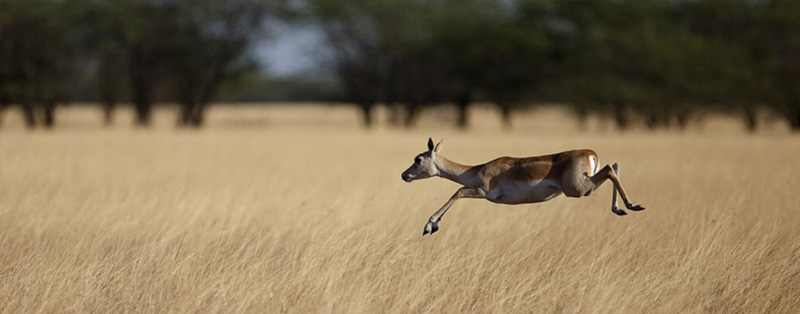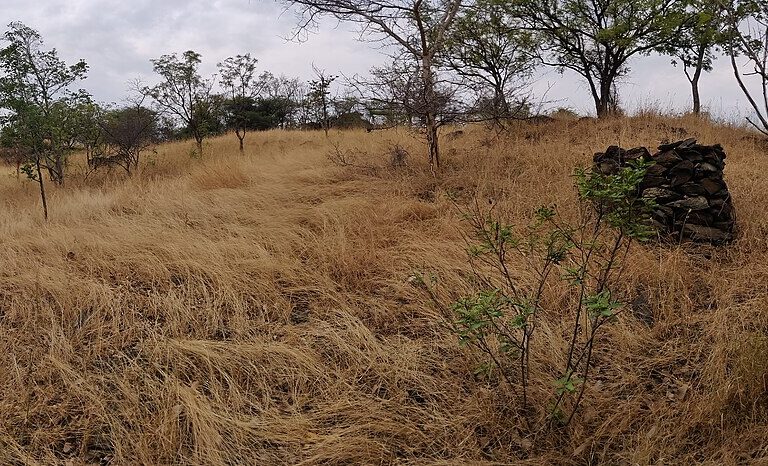 Indian Savanas
Indian Savanas
Indian savannas: New remote sensing study spotlights misclassification and flawed tree-planting
Regarded as ‘degraded forests’, Indian savannas have been historically misclassified and understudied. A new remote sensing study used tree cover as a metric to examine the drivers influencing the savannas and forests. Understanding these drivers helps prevent unscientific tree plantations that are detrimental to savannas. Mongabay-India writer Nikhil Sreekandan reports
New research from the University of Oxford and the University of Exeter examines savanna biome distribution and drivers through the lens of tree cover across India. Using remote sensing (the process of monitoring the physical characteristics of an area by measuring its radiation, typically from a satellite), the study analyses tree cover across forests and savannas in the country.
Tree cover is commonly used to differentiate between closed canopy forests and open canopy savannas, as seen in Africa, South America, and Australia. A similar pattern has also been studied in Southeast Asia. However, this is the first study to test the hypothesis India-wide, in an effort to try and achieve a broader understanding of the Indian savanna biome.
What little we know about savannas has been derived from other continents, specifically Africa. For many people, the word ‘savanna’ conjures up an image of the Serengeti in Africa, vast grasslands dotted with trees and teeming with herds of zebras and antelopes. Unfortunately, this has also meant that the established concepts and theories about savannas come with little insight from Asian ecosystems.
This critical knowledge gap is what the paper aims to fill, according to Trisha Gopalakrishna, a postdoctoral research fellow at the University of Exeter, and the lead author of the study. “There is so much research [on savannas] and we know all this theory, but it is all from different continents, there is not much from South and Southeast Asia,” begins Gopalakrishna.
The study leverages the capabilities of satellite imagery to map a larger picture of the Indian savanna biome. “The power of satellite imagery and remote sensing is that it allows us to analyse patterns at a large scale,” she adds. “We didn’t focus on any particular region, instead, we assessed tree cover across forests and savannas for the whole of India.”
 Dry savanna in Sathyamangalam, Tamil Nadu. Image by T R Shankar Raman via Wikimedia Commons (CC BY-SA 4.0).
Dry savanna in Sathyamangalam, Tamil Nadu. Image by T R Shankar Raman via Wikimedia Commons (CC BY-SA 4.0).
Why are Indian savannas viewed as ‘degraded forests’?
“We wanted to put the Indian savanna biome on the map because it is a crucial missing puzzle piece,” explains Gopalakrishna. Even today, savannas are regarded as ‘degraded forests’, which poses significant conservation and management challenges. “A lot of these areas, in fact, have been misclassified and assigned for afforestation to meet India’s ambitious tree planting targets,” she adds.
The study also firmly cautions against tree planting in Indian savannas. The classical description of a savanna is a mixed tree–grass system characterised by a discontinuous tree canopy in a continuous grass layer. However, tree cover in savannas can be highly variable, ranging from sparsely ‘treed’ grasslands to heavily ‘treed’ woodlands, and this depends on rainfall seasonality.
Although palaeo-historical evidence suggests that the savannas of Asia have existed for at least one million years, Indian savannas are still not considered a distinct biome. According to a 2017 study, Asian savannas have been misconstrued for biogeographical and historical reasons.
Biogeographically, much of South and Southeast Asia lies in the wet end of the savanna-climate region, making Asian savannas structurally very similar to deciduous forests. Since colonial foresters led vegetation classification in the region, from a perspective of timber and other extractive uses, they described any vegetation type with some degree of tree cover as a forest. As a result, savannas have come to be viewed as ‘degraded forests’, an ideology that persists even today.
Factors that impact tree-grass dynamics in Indian savannas
Gopalakrishna and other co-authors used Google Earth imagery to demonstrate that India has four distinct zones of tree cover — low, high, and medium tree cover zones, and a mixed tree cover zone. The medium and mixed tree cover zones host savanna vegetation. According to the study, in the intermediate zones encompassing the Indian savanna biome, the increase in soil sand fraction, high levels of grazing (domestic herbivory) and anthropogenic pressures are the primary drivers limiting tree cover.
The study goes a step beyond previous remote sensing-based analyses globally, by incorporating the role of herbivory for the first time.
“The problem with trying to understand the impacts of herbivory on savannas using this methodology is that it is not easy to get a metric of wild and domestic herbivore pressure. However, with access to a global data set on the geographic distribution of livestock, we were able to assess domestic herbivory as part of a remote sensing study,” shares Gopalakrishna.
While remote sensing has its advantages, Gopalakrishna stresses that the study was only possible because they could build on prior field research. They were able to better delineate forest and savanna biomes by using location data of endemic savanna grass species published in a 2022 paper led by Ashish Nerlekar. “With remote sensing and satellite imagery, the advantage is that you can work at broad scales, but then you still need the field component of the data to compare with the imagery and ‘ground truth’ it,” says Gopalakrishna.
Avoiding the pitfalls of afforestation
The study highlights that by considering the various resource-based and disturbance-based drivers we can improve upon simple tree-planting initiatives and design nuanced ecosystem restoration activities in Indian savannas. “There are all these goals India has put forward nationally and internationally, and there is a lot of momentum in terms of funding [for climate change mitigation], which makes it essential that we restore forests and savannas scientifically,” says Gopalakrishna.
Tree planting is seen as a sure-fire solution to combat all environmental ills. While the idea of afforestation is a powerful one, it must be ecosystem-specific, says Abi Tamim Vanak, Director of the Centre for Policy Design at the Ashoka Trust for Research in Ecology and the Environment (ATREE).
 A non-native tree planted in a grassland. Image by AJT Johnsingh via Wikimedia Commons (CC BY-SA 4.0).
A non-native tree planted in a grassland. Image by AJT Johnsingh via Wikimedia Commons (CC BY-SA 4.0).
“Afforestation is a problem because it wants to create a forest where none existed before. If an area does not support trees, planting more trees is not going to bring water, instead, it will further increase water stress. What we need is ecosystem-specific restoration,” explains Vanak.
From a policy perspective, India’s commitment under the Nationally Determined Contributions (NDC) to create an additional carbon sink of 2.5 to 3 billion tonnes of CO2 equivalent through additional forest and tree cover by 2030 places further stress on biomes such as savannas and grasslands.
According to Vanak, planting trees in these biomes to create additional carbon sinks is counterintuitive because savannas themselves are excellent carbon sinks.
“Savannas sequester carbon below ground, in the soil, and given the rainfall regime, they sequester as much carbon as forests do. It is important to maximise soil carbon sequestration and not just concentrate on above-ground woody carbon sequestration,” says Vanak.
“Ten percent of India consists of open natural ecosystems, which includes savannas. So, there is a massive potential for us to restore carbon responsibly. We need to focus on the restoration of grasslands and come up with a scientific grassland management policy,” he adds.
Meanwhile, Gopalakrishna hopes others will be able to build on their research paper. “We wanted to do something that could be reproducible. If somebody else were to use these free, open-source products, say in Indonesia or the Philippines, which also by the way have savannas, would we find similar patterns?” she wonders.
(The article was originally published on Mongabay India)
Support Our Journalism
We cannot do without you.. your contribution supports unbiased journalism
IBNS is not driven by any ism- not wokeism, not racism, not skewed secularism, not hyper right-wing or left liberal ideals, nor by any hardline religious beliefs or hyper nationalism. We want to serve you good old objective news, as they are. We do not judge or preach. We let people decide for themselves. We only try to present factual and well-sourced news.






